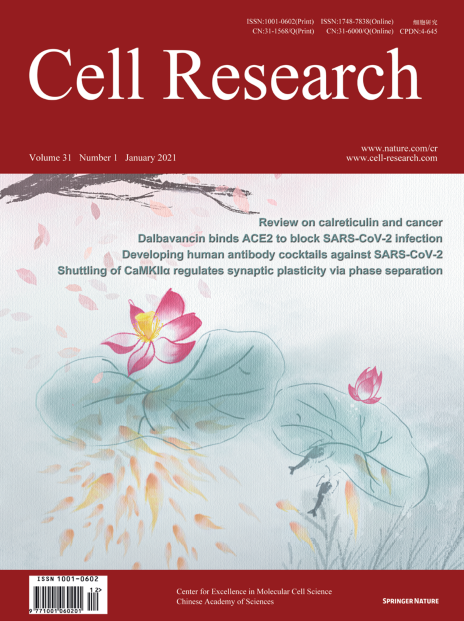
Advanced Search
Submit Manuscript
Advanced Search
Submit Manuscript
Volume 31, No 1, Jan 2021
ISSN: 1001-0602
EISSN: 1748-7838 2018
impact factor 17.848*
(Clarivate Analytics, 2019)
Volume 31 Issue 1, January 2021: 80-93
Skp2 dictates cell cycle-dependent metabolic oscillation between glycolysis and TCA cycle
Jing Liu1,2,† , Yunhua Peng2,† , Le Shi2,† , Lixin Wan1,3 , Hiroyuki Inuzuka1 , Jiangang Lon2 , Jianping Guo1,4 , Jinfang Zhang1,5 , Min Yuan6 , Shuangxi Zhang2 , Xun Wang2,7 , Jing Gao2 , Xiangpeng Dai1 , Shozo Furumoto8 , Lijun Jia9 , Pier Paolo Pandolf10 , John M. Asara6 , William G. Kaelin Jr11,12 , Jiankang Liu2,* , Wenyi Wei1,*
1Department of Pathology, Beth Israel Deaconess Medical Center, Harvard Medical School, Boston, MA 02215, USAWhether glucose is predominantly metabolized via oxidative phosphorylation or glycolysis differs between quiescent versus proliferating cells, including tumor cells. However, how glucose metabolism is coordinated with cell cycle in mammalian cells remains elusive. Here, we report that mammalian cells predominantly utilize the tricarboxylic acid (TCA) cycle in G1 phase, but prefer glycolysis in S phase. Mechanistically, coupling cell cycle with metabolism is largely achieved by timely destruction of IDH1/2, key TCA cycle enzymes, in a Skp2-dependent manner. As such, depleting SKP2 abolishes cell cycle-dependent fluctuation of IDH1 protein abundance, leading to reduced glycolysis in S phase. Furthermore, elevated Skp2 abundance in prostate cancer cells destabilizes IDH1 to favor glycolysis and subsequent tumorigenesis. Therefore, our study reveals a mechanistic link between two cancer hallmarks, aberrant cell cycle and addiction to glycolysis, and provides the underlying mechanism for the coupling of metabolic fluctuation with periodic cell cycle in mammalian cells.
https://doi.org/10.1038/s41422-020-0372-z